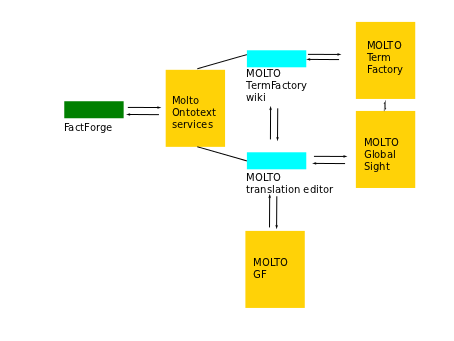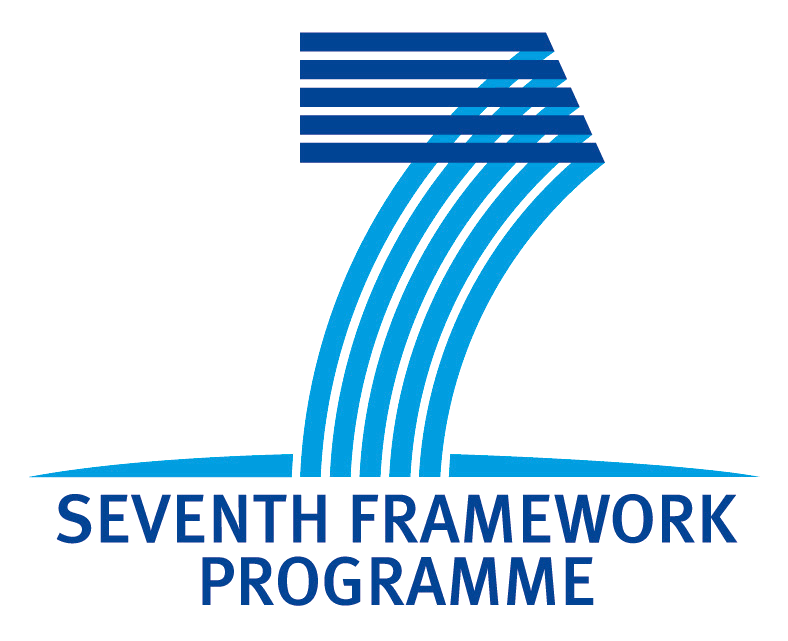5. Web services API for the MOLTO Translation Tools
To develop the above outlined web-based translation environment further, or implement other usage scenarios, a web service interface to the MOLTO editor API will be useful. The interface consists of several parts.
- Translation editor demo
- Globalsight API (adapted for MOLTO)
- TermFactory API (adapted for MOLTO)
- OntoText API
- MOLTO Grammar Tools API
- Translation tools glue
The editor demo is in the MOLTO darcs repository. The services provided by the GF server are outlined in the MOLTO Grammar Tools API document. The GlobalSight WS API was described above. The TermFactory web services are documented in the TF Manual at http://www.helsinki.fi/~lcarlson/CF/TF/doc/TFManual_en.xhtml#Services .
The translation tools glue connects the different parts of the whole. It includes at least:
- treegrid editor back end: answers queries to populate the editor from TF and Ontotext repositories, and communicates user additions to TF and the GF grammar editing services (see next section).
- linking between translation editor/s, translation leveraging tools (TM/termbank) and GF services
- linking between the MOLTO (GlobalSight) TT reviewing system and TermFactory
- linking between the MOLTO (GlobalSight) TT reviewing system and GF grammar editing services
- conversion between TermFactory ontology format and GF abstract grammar format
Here is a figure showing some of the connections in the design.

Requirements on the GF grammar and translation APIs
The above design generates a wishlist of requirements on the GF grammar and translation API.
Assume the GF translation goes to a reviser, working with or without another copy of the MOLTO translation tool. The corrected translation, in XLIFF form, should be brought to GF's attention. This calls for a new functionality from the GF grammar API: one which corrects the grammar and lexicon software to produce the output required by the corrected translation. This functionality is to be built on the GF example-based grammar writing methodology.
In order for the corrections to converge, revised translations must accumulate so that the newest corrections do not falsify earlier ones. The collection of manual corrections may become ambiguous or inconsistent, which situation should also be recognised and brought to the attention of a grammar engineer. Again, it is important to pay attention to user roles and rights.
We may want to provide ways to override GF translations with canned translations. At the translation tools level, this can happen by preferring TM translations over GF. We should also consider ways to override compositional translations on GF grammar level.
Another requirement is translation time update of grammar, at least the lexicon, so that translator's on the fly lexicon additions are possible.
If we want to support translating formatted documents using XLIFF, the minimum requirement is that the GF translation API handles XLIFF inline tags.
- Printer-friendly version
- Login to post comments
- Slides
What links here
No backlinks found.


